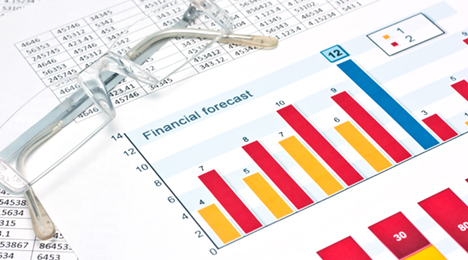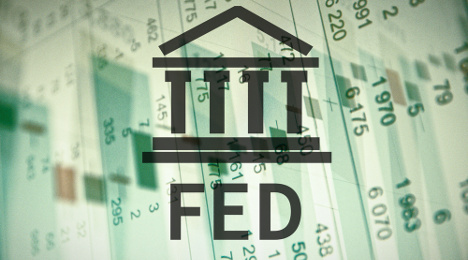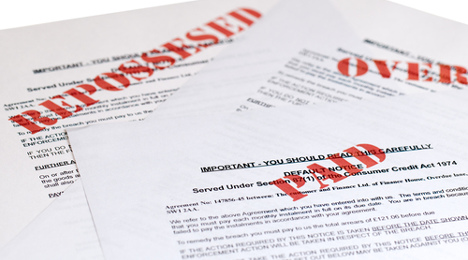The latest report from Fitch Ratings indicated U.S. auto loan and lease credit performance will likely continue to deteriorate in the second half of 2016 and into 2017.
Analysts noted year-over-year credit performance deteriorated for auto finance companies in the first half of 2016, despite improved loss rates in the first half of this year relative to the second half of last year, which Fitch attributed primarily to seasonality.
“Fitch expects credit performance to continue to deteriorate going into 2017, particularly in the subprime segment as less tenured auto finance companies with looser underwriting standards have entered the market in recent years,” Fitch Ratings director Michael Taiano said.
Strong vehicle installment contract as well as lease portfolio growth for Fitch-rated auto finance companies continued in the first half of this year due to strong vehicle sales, low interest rates and continued consumer demand for leases and extended loan terms. Although analysts acknowledged the growth rate decelerated slightly from last year.
Fitch is expecting financing growth to continue to moderate, particularly should interest rates rise and used-vehicle values decline, which could impact lease pricing.
Despite the recent credit deterioration, Fitch-rated auto lenders' ABS credit performance continues to be strong relative to historical norms as the average net loss rate increased a modest 8 basis points to 0.73 percent in the second quarter of this year from 0.65 percent in the year-ago period.
The firm pointed out average 30-day delinquencies actually decreased slightly to 3.16 percent from 3.25 percent during the same period.
“Losses among the largest auto lenders remained low, but continue to normalize due to an increase in both loss frequency and severity,” Fitch said. “The average net charge-off rate on the managed portfolios for lenders cited in the report increased to 0.53 percent from 0.43 percent year-over-year.”
Fitch went on to mention that Huntington Bank, Chase and American Honda Finance ended the first half of the year with the lowest credit loss rates largely due to the prime nature of their portfolios and consistent underwriting standards.
“Credit losses and delinquencies for the auto finance industry will likely trend higher as more recent vintages continue to season and recovery values decline from historic highs,” Taiano said.
While the Federal Reserve chose again to pass on moving interest rates higher, research from TransUnion found that up to 92 million credit-active consumers would experience some type of monthly debt service payment increase if policymakers had raised interest rates by 25 basis points.
However, TransUnion determined the average monthly payment increase for these consumers would be a mere $6.45. Further reassuring for finance companies, analysts insisted only about 10 percent of these impacted consumers — or 9.3 million — will likely not have the capacity to absorb an increased monthly payment obligation arising from a Fed rate hike.
To recap, this month’s gathering of the Federal Open Market Committee (FOMC) produced a result the industry has seen for much of the past couple of years — members leaving the federal funds rate unchanged.
“The committee judges that the case for an increase in the federal funds rate has strengthened but decided, for the time being, to wait for further evidence of continued progress toward its objectives,” the Fed said last week.
“The stance of monetary policy remains accommodative, thereby supporting further improvement in labor market conditions and a return to 2 percent inflation,” policymakers added.
The Fed explained that information received since the FOMC met in July showed that the labor market has continued to strengthen and growth of economic activity has picked up from the “modest” pace seen in the first half of this year.
“Although the unemployment rate is little changed in recent months, job gains have been solid, on average,” the Fed said.
Policymakers also pointed out household spending has been growing strongly but business fixed investment has remained soft. Inflation has continued to run below the committee’s 2 percent longer-run objective, partly reflecting earlier declines in energy prices and in prices of non-energy imports.
The Fed went on to say market-based measures of inflation compensation remain low; most survey-based measures of longer-term inflation expectations are little changed, on balance, in recent months.
Before the Fed made its decision, TransUnion found that up to 68 percent of credit-active consumers would experience some level of payment shock — a change in monthly payment obligations — from an interest rate increase. Analysts insisted that unlike vehicle installment contracts that have a fixed APR for the term, consumers who are susceptible to a payment shock have one or more variable-rate credit products in their wallets, such as a credit card, home equity line of credit, or certain forms of mortgages and personal loans.
TransUnion also analyzed historical payment behavior across each consumer’s credit wallet to assess whether that consumer could afford an increased monthly payment of any size.
“Ahead of a potential rate hike from the Federal Reserve, there is much speculation about the impact to consumers — and their lenders — from increased monthly payments,” said Nidhi Verma, senior director of research and consulting in TransUnion’s financial services business unit.
“In theory, 137 million consumers could be exposed to a payment shock, but in fact not all of these consumers will be impacted,” Verma continued. “For instance, some consumers are transactors, i.e., they pay their balances in full each month. Some have an APR that cannot be further increased.
“Our data show there will indeed be an impact from potential interest rate rises, but it’s far less widespread than many anticipate,” she went on to say. “Most importantly, it can be identified at a consumer level based on our research.”
According to TransUnion’s study, while consumers across all risk tiers would experience an impact from the potential Fed interest rate hike, the impact varies. Consumers in the near-prime risk tier (those with a VantageScore 3.0 credit score between 601 and 660) had the largest share, with 82 percent of near-prime consumers impacted from a potential rate increase.
TransUnion used its CreditVision aggregate excess payment (AEP) algorithm, which incorporates monthly payments from mortgages, credit cards and other debt obligations, to determine a consumer’s capacity to afford an increased monthly payment. With a 25-basis point rise in interest rates, 90 percent of exposed consumers can absorb their respective payment shocks. However, 9.3 million consumers do not appear to have the capacity to absorb a 25 basis point rise in interest rates.
“While it’s important to address the 9.3 million consumers who cannot absorb the payment shock, 90 perent percent of exposed consumers can afford their increased monthly payments,” Verma said. “However, if interest rates continue to rise progressively, more consumers might not be able to absorb the payment shock.
Lenders should be mindful of which consumers in their portfolio are at risk from payment shocks, and use solutions such as AEP to identify these consumers and engage them appropriately,” she added.
TransUnion’s study found that if interest rates were to rise by 100 basis points, an additional 2.5 million consumers might have a negative capacity to absorb their respective payment shocks. In total, 11.8 million consumers are estimated to be at risk of a negative capacity to absorb their increased payment obligations from a sudden 100 basis point rate increase.
“Fortunately, we believe it is highly unlikely the Fed will raise rates more than 25 basis points at any one time over the near term,” Verma said. “This pace gives potentially impacted consumers an opportunity to adjust. In many cases, making minor changes to household spending would allow consumers to accommodate the payment shock.”
Verma discussed TransUnion’s finding more in the video available at the top of this page and also posted here.
For more information on how the impact of a Fed interest rate hike might impact consumers, and how to use TransUnion’s CreditVision aggregate excess payment algorithm to estimate the risk in your portfolio, visit www.transunioninsights.com/interestrates.
While noting that outstanding balances are at an all-time high, auto defaults moved higher again in August, but not to a degree to trigger an alarm from S&P Dow Jones Indices and Experian.
The auto segment of the S&P/Experian Consumer Credit Default Indices for August posted an 8 basis point increase versus the previous month to come in at 1.01 percent. The latest reading reported on Tuesday also is 11 basis points higher than August of last year.
Meanwhile, the composite rate — a comprehensive measure of changes in consumer credit defaults — ticked up 2 basis points on a sequential basis in August to land at 0.85 percent. Despite the slight rise, the composite rate is 11 basis points lower than the same month last year and has remained below 1 percent for 16 months in a row.
Like auto defaults, the first mortgage default rate moved up 2 basis points from the prior month to come in at 0.68 percent for August.
The bank card default rate was the only decrease in August at 2.86 percent, down 6 basis points from last month.
The five major cities included in Tuesday’s update produced mixed results in August, with three cities showing higher default rates.
New York reported a 0.91 percent default rate for August, rising 14 basis points from July's reading of 0.77 percent.
Dallas’ default rate increased 5 basis points from the prior month to 0.74 percent.
Chicago also saw its default rate increase, up 4 basis points to 0.93 percent.
Los Angeles registered a default rate of 0.60 percent, a decrease of 3 basis points.
Miami also posted a decrease, the first since February. Miami’s rate dropped 16 basis points to 1.21 percent.
“Despite small monthly movements in consumer credit defaults, the overall default rates are stable and close to the lowest levels since shortly before the financial crisis,” said David Blitzer, managing director and chairman of the index Committee at S&P Dow Jones Indices.
“Bank card default rates are more volatile and slightly higher than those tracking mortgages or auto loans,” Blitzer continued. “Compared to a year earlier, auto and bank card defaults rose 11 and 15 basis points, respectively; mortgage loan defaults are 16 basis points lower. The overall consumer credit picture gives little reason to be concerned about default rates.
Blitzer closed his monthly assessment by mentioning related data published by the Federal Reserve that showed the growth in consumer and household debt is currently about 4.4 percent per year, increasing about 2 percentage points faster than nominal GDP growth.
“Consumer credit — bank cards and auto loans — grew before, during and after the recent recession and is currently at an all-time high,” Blitzer said. Mortgage debt peaked in the first quarter of 2008 and reached its most recent low point in the first quarter of 2015. It is now up 2.1 percent from the low.
“Barring a repeat of the recent and severe recession, both consumer credit and mortgage debt outstanding are expected to continue growing at, or faster than, the pace of nominal GDP growth,” he added.
Jointly developed by S&P Indices and Experian, analysts reiterated the S&P/Experian Consumer Credit Default Indices are published monthly with the intent to accurately track the default experience of consumer balances in four key loan categories: auto, bankcard, first mortgage lien and second mortgage lien.
The indices are calculated based on data extracted from Experian’s consumer credit database. This database is populated with individual consumer loan and payment data submitted by lenders to Experian every month.
Experian’s base of data contributors includes leading banks and mortgage companies and covers approximately $11 trillion in outstanding loans sourced from 11,500 lenders.
With used-vehicle financing leading the charge, Experian’s latest State of the Automotive Finance Market report showed finance companies booked significantly more contracts with super-prime customers during the second quarter than they did with deep subprime consumers.
Creating what analysts called steady growth and remarkable stability quarter-over-quarter, the second-quarter report released on Tuesday indicated that auto finance companies made more than five times as many loans to super-prime customers (17.9 percent of total auto loans and leases) as to deep-subprime customers (3.5 percent of total auto loans and leases).
That influx of higher-grade paper meant the combined subprime and deep-subprime share of new- and used-vehicle loans and leases dropped from 23.3 percent in Q2 2015 to 22.8 percent in Q2 2016, according to Melinda Zabritski, senior director of automotive finance for Experian.
“Automotive lenders seem to be keeping cool heads when it comes to how much risk they are willing to take with subprime and deep-subprime customers,” said Zabritski, who is coming back to the SubPrime Forum at Used Car Week for the fourth consecutive year to share more data and trends.
“Yes, subprime and deep-subprime loans are growing, but the entire market is growing from a volume perspective across all risk tiers,” she continued. “In fact, the subprime loans have actually dropped as a percentage of the total market. That, combined with only a slight uptick in delinquencies, makes clear that the sky is not falling.”
Experian determined 30-day delinquencies inched up just 3 basis points year-over-year from 2.19 percent in Q2 2015 to 2.22 percent in Q2 2016. Meanwhile, Experian found that 60-day delinquencies moved just 6 basis points higher from 0.56 percent to 0.62 percent in the same time period.
“Fear of an impending automotive subprime bubble has been swirling around the industry since the recovery from the Great Recession,” Experian said. “Those fears haven’t come to fruition.”
Overall, Experian reported that finance companies held $1.027 trillion in outstanding balances through the second quarter; that’s up from $932 billion a year earlier.
Each of the four major categories of providers that Experian designates posted year-over-year gains in outstanding balances. Those four categories include commercial banks (up by $27 billion), captives (up $13 billion), credit unions ($33 billion) and finance companies that do not hold deposits and often take on subprime risk (up $21 billion).
More used paper in portfolios
Experian highlighted used-vehicle loans grew to record heights in terms of average dollar amount and overall loan share during the second quarter.
The average used vehicle loan reached an all-time high of $19,101 in Q2, up from $18,671 in Q2 of last year.
Used-vehicle contract volume also reached a new peak, accounting for 55.61 percent of all vehicle loans during the second quarter.
Analysts noticed the growth was driven by jumps in prime and super-prime consumers choosing used vehicles. Specifically, 43.3 percent of super-prime consumers selected a used vehicle, which represents a 10 percent increase over 2015. For prime consumers, 59.9 percent chose used, a 6.6 percent increase over the previous year.
This shift also helped push the average credit score for a used vehicle loan from 645 in Q2 2015 to 648 in Q2 2016.
“One of the biggest trends we continue to see is the shift to used vehicles by customers with excellent credit,” said Zabritski, who will appear during the SubPrime Forum, which runs Nov. 14-16 at the Red Rock Resort and Casino in Las Vegas.
“As vehicle prices continue to rise, savvy consumers are looking for ways to control costs. That appears to be pushing more customers toward used vehicles,” she went on to say.
Other Q2 2016 findings:
• The average monthly payment for a used vehicle was $364, up from $361 in Q2 2015.
• The average monthly payment for a new vehicle loan was $499, up from $483 in Q2 2015.
• The average new vehicle loan amount was $29,880, up $1,356 from the Q2 2015 average new vehicle loan amount of $28,524.
• Average customer credit scores for new vehicle loans fell slightly, from 709 in Q2 2015 to 708.
• The average loan term for a new vehicle went from 67 months in Q2 2015 to 68 months.
The National Automotive Finance Association and the American Financial Services Association on Thursday announced the availability and launch of the 2016 Non-Prime Automotive Finance Survey.
For 20 years the NAF Association has produced a report of the nonprime auto financing market. NAF Association leaders partnered with AFSA for the second year to conduct the broadest survey of the non-prime auto-financing marketplace. Through the combined efforts of both associations, 50 companies contributed to the survey to produce the most comprehensive study of the industry ever compiled.
“More and more companies are relying on the survey as a benchmarking tool to measure their company’s performance and to identify industry trends,” NAF Association executive director Jack Tracey said. “The metrics can also be useful in explaining a company’s policy decisions to regulators.
“This broad base of contributing finance company data provides an accurate and unbiased view of the industry,” continued Tracey, who again will be part of the SubPrime Forum during Used Car Week on Nov. 14-16 at the Red Rock Resort and Casino in Las Vegas.
The increased participation in the 2016 Non-Prime Survey represents an outstanding principal exceeding $34 billion (year end 2015).
Below is an example of the key market trends, performance evaluations, statistical analysis, comparison and benchmarking included in survey:
• Market growth
• Competition
• Market share
• Dealerships network
• Risk indicators
• Credit scores
• Payment to income ratios
• Average loan rates
• Delinquency
• Repossession rate
• Net charge-off rate
• Average amount financed
• Contract terms
• Operating expenses
• Profitability
The survey is being distributed at no cost to NAF Association and AFSA member companies that participated. For other companies interested in the survey, the cost is $500 and it can be ordered online here.
When this summer began, Fitch Ratings projected “the summer months do not figure to be as kind for the sector,” as analysts discussed future performance of subprime auto loan ABS.
The latest index results Fitch released on Thursday showed the firm’s inklings were correct as analysts indicated seasonably slow summer months are translating to “notable increases” in annualized losses and delinquencies for U.S. subprime auto loan ABS.
In contrast, Fitch pointed out prime auto ABS saw “fairly stable” performance in July, “though the pace of losses is likely to increase as the fall approaches.”
Analysts determined subprime 60-day delinquencies rose 13 percent month-over-month in July to 4.59 percent. They noted those delinquencies were 17 percent higher versus a year earlier, but this rate was still below the record peak level of 5.16 percent recorded in earlier this year.
Fitch found that subprime ABS annualized net losses hit 7.39 percent in July, rising 17 percent on a sequential basis and 28 percent year-over-year.
“The summer months typically produce weaker asset performance as consumers head for vacation,” Fitch said.
“Increased losses are emanating from weaker collateral pools in the 2013-2015 transactions, which have weaker credit quality including lower FICO scores, higher amounts of extended loan terms (over 60 months) and higher LTVs,” the firm continued.
“Further, early defaults on extended term loans in pools are driving loss severity higher along with loss rates in 2016,” Fitch went on to say.
Analysts determined prime delinquencies moved 12 percent higher month-over-month to 0.40 percent in July. The reading represented a 21-percent jump above July of last year.
Fitch reported prime annualized net losses stood at 0.48 percent in July, climbing nearly 20 percent year-over-year.
“Prime auto ABS continues to produce solid asset performance in 2016, supported by a surprisingly strong wholesale vehicle market which is benefitting from very robust truck and SUV values,” analysts said.
“Used-vehicle values continue to defy expectations in 2016 and remain healthy. The strength in the wholesale market diverges immensely by vehicle segment, with strength in larger vehicle segments while the car segment trails and values are currently depressed,” they continued.
“Despite this, Fitch expects used vehicle values will be pressured in the latter stages of 2016 and come down from current levels,” analysts went on to say. “Rising used-vehicle supply, including from notable increases in residual returns expected in 2016 and early 2017, will constrain values and contribute to losses rising.”
Fitch added that ratings performance remains solid so far this year with the firm issuing 47 upgrades through mid-August versus 41 during the same period in 2015.
Fitch's prime sector outlook for the remainder of 2016 is stable for asset performance even with losses expected to rise, and positive for the ratings outlook. The outlooks are both stable for the subprime sector.
Fitch’s auto loan ABS indices track the performance of $93.5 billion of outstanding collateral, of which 60 percent is backed by prime collateral and the remaining 40 percent subprime.
While delinquencies posted a “slight increase” during the second quarter, Jason Laky, senior vice president and automotive and consumer lending business leader for TransUnion, pinpointed the two drivers that brought more than 5 million additional consumers into the auto finance market in Q2.
According to TransUnion’s latest Industry Insights Report released on Tuesday, the number of consumers with an auto loan increased 7 percent from 72.87 million in Q2 2015 to 77.95 million in Q2 2016. During a phone conversation with SubPrime Auto Finance News, Laky pointed out what is bringing those new accounts into portfolios.
“One is we still have strong economic fundamentals,” Laky said. “Consumers are continuing to get new jobs and so the employment rolls are growing. People are getting raises so their wages and salaries are increasing year-over-year. People have the confidence to get a new car. If they haven’t worked for a while, and you just got yourself a new job, a lot of people take that occasion to get themselves newer transportation.
“The second thing is we’re still in a very good rate environment,” he continued. “Lenders are offering strong rates and even some really good lease deals. Many consumers are also choosing to finance their new-car purchase or lease their new-car purchase just because it’s a very low cost of funds to do so. People who might otherwise pay cash are choosing to finance.
In Q2, TransUnion indicated the average auto loan balance per consumer grew 2.7 percent and reached $18,177, the highest level post-recession. The average balance was up from $17,699 in Q2 of last year.
“Competition is still strong,” Laky said. “Over the past five years, as we’ve come out of the recession, there has been a return of credit unions. We’ve seen credit unions get big again in auto lending, particularly on the prime side.
“On the non-prime side, we’ve seen again some growth in confidence among the independent lenders, the ones who focus on non-prime and subprime consumers,” he continued. “When subvented financing and good lease programs are in place, captive finance companies are in play, as well.
“It’s a good market where the rising tide is lifting boats for everyone,” Laky added.
Viewed one quarter in arrears to ensure all accounts are reported and included in the data, TransUnion determined auto loan originations grew 6.4 percent year-over-year in the first quarter of 2016. Auto originations reached their highest post-recession level at 6.93 million in Q1 2016, up from 6.51 million in Q1 2015.
With so much paper in portfolios nowadays, TransUnion turned its attention to the auto delinquency rate connected to contracts 60 or more days past due.
Analysts found that in Q2 of this year the auto delinquency rate increased to 1.11 percent, an 11-basis point rise from 1.00 percent in Q2 of last year.
“While delinquency rates rose in the second quarter, auto delinquency has been at all-time lows. We do not see a cause for concern from this slight increase,” Laky said.
“It still remains a good loan to make as you’ve seen in the delinquency side,” he continued about auto financing. “That means as more lenders are competing for every loan, the buy rates face a lot of pressure.
“What lenders are doing — the ones I think are successful in the marketplace at achieving continued growth in a high-competition environment — they’re looking for new ways to segment risk using alternative data or trended data that TransUnion has and others to better understand the risk of that particular consumer so they can carve out places where they believe that the consumer — be them subprime or prime — is going to perform better than a standard scoring model applicant,” Laky went on to say.
“When lenders can find those consumers, they can confidently compete for those loans and know they’re going to be profitable,” he added.
For more details about other segments of the credit market, TransUnion’s Q2 2016 Industry Insights Report can be reviewed here.
While also visiting the popular topic of the presidential election, analysts from S&P Dow Jones Indices and Experian noticed auto loan defaults edged up slightly according to data through July. But defaults remained below the 1-percent level for the fourth consecutive month, mimicking a pattern that unfolded last summer.
The auto loan portion of the S&P/Experian Consumer Credit Default Indices released on Tuesday showed defaults on vehicle contracts recorded a 0.93 percent default rate in July, up 2 basis points from June. However, the rate has stayed below 1 percent since April.
A year ago, the auto loan default rate stayed below 1 percent from April through September.
Overall, the July composite rate — a comprehensive measure of changes in consumer credit defaults — came in at 0.83 percent in July, up 1 basis point from the previous month.
Analysts indicated the first mortgage default rate was 0.66 percent in July, up 1 basis point from the prior month. The bank card default rate came in at 2.92 percent, down 19 basis points compared to June.
S&P and Experian also mentioned four of the five major cities saw their overall default rates decrease during the month of July.
Chicago recorded a default rate of 0.89 percent, down 12 basis points for the month.
New York reported a default rate of 0.77 percent, down 6 basis points from June.
Dallas’ default rate decreased 5 basis points from the prior month, posting a default rate of 0.69 percent.
Los Angeles registered a default rate of 0.63 percent, down 4 basis points in July.
Meanwhile, Miami’s default rate increased for the fifth consecutive month, ticking up 6 basis points for a default rate of 1.37 percent.
“Consumer credit default rates remain close to 12-year lows amidst moderate growth in spending and incomes,” said David Blitzer, managing director and chairman of the index committee at S&P Dow Jones Indices.
“The consumer economy is growing with few significant difficulties in accessing credit,” Blitzer continued. “Personal incomes rose 2.7 percent in the last year and retail sales, excluding autos, were up 2.3 percent in the year to July.
“Employment is increasing; median wage growth, as reported by the Atlanta Federal Reserve Bank, is 3.6 percent at annual rates; and consumer sentiment continues at high levels,” he went on to say. “Consumers' use of debt has expanded with both consumer credit and mortgage debt balances rising.”
In a separate commentary posted this past Friday, Stifel chief economist Lindsey Piegza elaborated about some of the data Blitzer mentioned, noting “retail sales were flat in July, significantly weaker than expected, according to Bloomberg.”
Piegza continued, “Last week, we wrote that while solid April to June, support from the consumer is likely to prove temporary against the backdrop of continued weak investment on the corporate side, stunting the job and income creation needed to support a strong consumer and trend growth in the remaining months of the year.
“Temporarily supplemented by debt or an erosion of savings, the widening gap between income and consumption in Q2 tells a cautious tale for economic activity moving forward rather than an indication of future strength as some of the more hawkish (Federal Open Market Committee) members have suggested,” she also said.
Piegza went on to say that the “disappointing” retail sales report offered what she called the first indication of a decline in consumer momentum.
“Heading into the second half of the year, consumers are unlikely to be the solid support they were in Q2, removing or at the very least hindering one of the key sectors of strength for the economy. Without a marked turnaround in business investment, amid waning consumer activity, growth will remain lackluster for some time,” she said.
Turning back to Blitzer, he closed his default report commentary by touching on November’s presidential vote.
“This being an election year, and one when there will definitely be a new president next January, the economy faces more than the usual uncertainties,” Blitzer said. “With the electoral outcome unknown and large differences between the candidates' policy proposals, one should expect these uncertainties to cause some delays in business investments or consumer spending on big ticket items.
“Delays in spending are likely to limit the growth in consumer and corporate debt, avoiding substantial increases in default rates in the near term,” he added.
Jointly developed by S&P Indices and Experian, analysts reiterated the S&P/Experian Consumer Credit Default Indices are published monthly with the intent of accurately tracking the default experience of consumer balances in four key loan categories: auto, bankcard, first mortgage lien and second mortgage lien.
The indices are calculated based on data extracted from Experian’s consumer credit database. This database is populated with individual consumer loan and payment data submitted by lenders to Experian every month.
Experian’s base of data contributors includes leading banks and mortgage companies and covers approximately $11 trillion in outstanding loans sourced from 11,500 lenders.
The Justice Department reached a settlement this week with a finance company that repossessed vehicles in violation of the Servicemembers Civil Relief Act (SCRA) — a discovery the DOJ made during an investigation of Santander Consumer USA for similar infractions that generated a $10.5 million settlement.
DOJ officials announced that HSBC Finance Corp., as successor to HSBC Auto Finance, has agreed to pay $434,500 to resolve allegations that it violated the SCRA by repossessing 75 vehicles owned by protected servicemembers without obtaining the necessary court orders.
The settlement is subject to approval by the U.S. District Court of the Northern District of Illinois.
During the investigation, the department learned that HSBC conducted repossessions without court orders even when it had evidence in its own records suggesting that a borrower could be a protected servicemember. In one such case, HSBC continued with a repossession after learning that an initial attempt was unsuccessful because guards would not allow the “repo truck” to enter a “secured military post” in Indiana where the vehicle was located.
Officials explained the settlement covers repossessions that occurred between 2008 and 2010. HSBC Auto Finance originated and serviced installment contracts until 2010, when HSBC sold its auto financing operations and assets to SCUSA.
In February of last year, the department entered a settlement with Santander that provides servicemembers with more than $10.5 million in compensation for repossessions that violated the SCRA. As part of the investigation of Santander’s repossession practices, the department learned that HSBC sold to SCUSA the right to collect debts owed by servicemembers after their cars had been repossessed by HSBC without court orders.
“HSBC repossessed cars without taking into account their owners’ ongoing service to our country,” principal deputy associate attorney general Bill Baer said. “This settlement rights this wrong, compensates the affected servicemembers and honors our commitment to making sure military members are treated fairly at all times.”
The Justice Department reiterated the SCRA protects servicemembers against certain civil proceedings that could affect their legal rights while they are in military service. It requires a court to review and approve any repossession if the servicemember took out the loan and made a payment before entering military service.
Officials pointed out the court may delay the repossession or require the lender to refund prior payments before repossessing. The court may also appoint an attorney to represent the servicemember, require the finance company to post a bond with the court and issue any other orders it deems necessary to protect the servicemember.
By failing to obtain court orders before repossessing motor vehicles owned by protected servicemembers, the DOJ insisted HSBC prevented servicemembers from obtaining a court’s review of whether their repossessions should be delayed or adjusted to account for their military service.
Most of the servicemembers compensated through this latest settlement received partial compensation through the settlement with Santander, and this agreement requires HSBC to pay $5,500 to each of these servicemembers. HSBC must pay $11,000 to affected servicemembers who did not receive payments from the Santander settlement.
HSBC also must repair the credit of all affected servicemembers.
An independent settlement administrator will contact servicemembers to be compensated through this settlement in the upcoming months. The independent administrator will locate victims and distribute payments at no cost to the servicemembers.
“Servicemembers should never have to worry that they will lose their cars while they answer our nation’s call to duty,” said principal deputy assistant attorney general Vanita Gupta, head of the Justice Department’s Civil Rights Division.
“HSBC should have heeded these concerns before repossessing vehicles,” Gupta continued. “I commend the company for working cooperatively to reach an appropriate resolution once the department raised the issue.”
The department’s enforcement of the SCRA and other fair lending laws is conducted by the Civil Rights Division’s Housing and Civil Enforcement Section. Since 2010, the division has provided more than $1.4 billion in monetary relief for individual borrowers and affected communities through its enforcement of the Fair Housing Act, the Equal Credit Opportunity Act and the SCRA.
While BillingTree offered some first-hand assessments from attendees who were in Sacramento, Calif., for the Consumer Financial Protection Bureau’s field hearing after the agency released its debt collection regulatory proposal, SubPrime Auto Finance News also connected with a current member of the CFPB’s consumer advisory board to gather perspective on the implications on auto financing.
While the CFPB acknowledged it plans to “address first-party debt collectors soon, but on a separate track,” Joann Needleman explained there is plenty of material contained with the bureau’s rule proposal that finance companies should watch.
“I would tell any client who was an indirect lender who either collected their own debt or sent it out to somebody else, if you didn’t have policies and procedures and compliance systems in place within your entity, you are way behind the eight ball. You certainly have to do that. If you haven’t done it, then you need to do it now,” said Needleman, a partner at Clark Hill and leader of Clark Hill’s consumer financial services regulatory and compliance group.
Neeedleman, the immediate past president of the board of directors of the National Creditors Bar Association, has extensive litigation experience in state and federal courts, successfully defending creditors against claims brought under the Fair Debt Collection Practices Act and Fair Credit Reporting Act as well as state statutes. She provides counsel, consultation and litigation services to financial institutions, law firms and debt buyers throughout the country.
During a conversation Friday afternoon, Neeedleman elaborated on the position finance companies now have if they’ve deployed policies, procedures and compliance systems with regard to collecting on delinquencies or in connection with deficiencies if repossessions and recoveries are in motion.
“If you do have established procedures and policies in place, I think the proposal is a really good outline for you to tweak that infrastructure,” she said. “Ultimately in the proposed rules there may be some tweaks and changes, but I think the CFPB has given you a very clear hint of what are their priorities, what they ultimately would like to see, and I would strongly suggest that any auto finance company ensure those policies are procedures meet the CFPB’s objectives.
“There may be different ways to get from point A to point B,” Neeedleman continued. “But I think at the end of the day, if you’re ensuring that consumers are protected and you’re providing information to consumers when they need it, there are opportunities that when consumers have concerns you address them and you monitor your frequency when you communicate with consumers, I think you’re going to be fine.
“Then when the (first-party) rules come out, you’re not going to have to blow everything up and start again,” she went on to say.
Executives from BillingTree were part of the industry members keenly interested in what the CFPB proposed, which can be viewed here. In a blog post relayed to SubPrime Auto Finance News, BillingTree made three observations:
—The in-person audience was a mix of collection agency representatives, debt buyer representatives, attorneys, consumer advocacy groups, media and government staff.
—The mood of the hearing was civil; however, it was clear there were some who were pleased with the proposals and others who see them as potentially having a detrimental impact to their well-being.
—One commonality evident from those who spoke was the desire for clarity and definition of rules.
BillingTree then hosted a reception after the CFPB’s field hearing and collected more thoughts from attendees. Among some of the highlights:
—Everyone in attendance shared the same core values — treating consumers with dignity and ensuring compliance with the law.
—Use of automatic dialing systems and adopting technology today needs to happen.
—Collectors are professional. Criminals are the scammers. The two are not the same.
The attendee reference about automatic dialing systems touched on the segment about collections that Needleman described as the “game changer.” So much communication technology has become commonplace and simply didn’t exist when the when the Fair Debt Collection Practices Act was enacted in 1977. Needleman called it “disappointing” that technology was not addressed in more detail within the CFPB proposal that she was still reviewing when SubPrime Auto Finance News connected with her.
“Back in 1977, we had rotary phones, and that’s it. No Internet. No email. No text. No portals. No voicemail. The act does need to be modernized, and I think the regulators see that,” Needleman said.
“For whatever reason when the Fair Debt Collection Practices Act was enacted in 1977, Congress did not give the (Federal Trade Commission), which was the agency that had primary jurisdiction over the FDCPA, any rulemaking authority,” Needleman pointed out earlier in the conversation. “The industry has been forced to build compliance based on their own interpretation of the statute or interpretation by the courts, which has made it very difficult.
“I think in some ways the industry is kind of happy from a very high-level perspective that we will have rules and there will be bright-line ways of doing things. Again, the debate will be 'is what the CFPB proposing workable?'” she added.
Neeedleman mentioned it took the CFPB about three years to get to the rule-proposal stage. The customary comment period is now underway and organizations such as the American Financial Services Association, the Consumer Bankers Association, ACA International and DBA International are likely to respond with recommendations.
“From the industry perspective, I don’t think it was blindsided by these rules,” Needleman said. “People in the collection industry no matter what market you’re involved in, have pretty much been prepared and rules were coming.”












